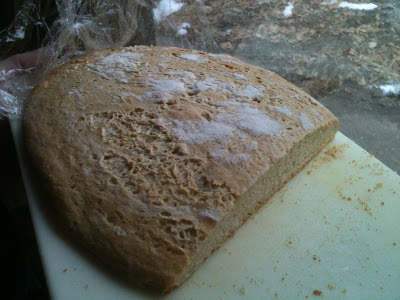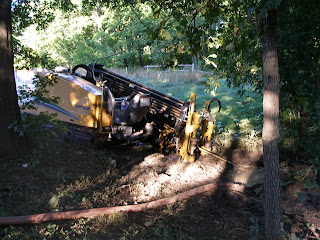A question about swale design. How big and far apart.
Like any great collegiate answer from professors to designers..."It depends".
How big is the catchment area?
What are you planting in the berms? Trees would be bigger berms further apart. Shrubs smaller berms and closer.
Do you want to use the swale for acces? Tractor or wheelbarrow? Will you mow the area?
What soil type do you have?
We have clay so the water infiltrates for hours if not days and we can direct the water to many points. With sandy soil the swales are fewer and bigger to collect more water in the planting zones, then again it depends on your slope.
Overall, start with access, this will dictate the swale minimum. Then what plants the land will support, this will dictate the berm minimum.
Seasonal rainfall and event average is more important than yearly average. If all the rain comes in a three events, you want BIG swales. Like Jeff Lawton's Jordan project. If you get many 1/4 inch rains usually but 3-5 inches in the extreme, design for the extreme.
We have a 150 by 50 foot hill with three swales for an orchard. It drops about ten feet in 50. The bottom swale never gets over flow from above swales, but we have a large catchment area directed into the swales via drain tile form the roofs and driveway.
All things being site specific, our swales are 15 feet apart, 3 feet wide, about 2 feet deep ( 1 foot dug and bermed) and water enters a spillway at 8 inches.
Not only the rain is caught but also spring melt. Our swales were filled recently because the ground was frozen and all the snow melted. This is a great time to charge the soil with moisture for a unpredictable Spring and Summer. Spring is a great time to move water, even on sandy soils.
I have found that the hill is made even steeper if the swales are close. Since the new berm raises the elevation at each berm point. Draw a side view of the hill and play with shapes and slope. This is mostly art and to complex for a formula, although an ag formula exists probably.
Thanks for asking, I hope this helps.
Dan Halsey
How big is the catchment area?
What are you planting in the berms? Trees would be bigger berms further apart. Shrubs smaller berms and closer.
Do you want to use the swale for acces? Tractor or wheelbarrow? Will you mow the area?
What soil type do you have?
We have clay so the water infiltrates for hours if not days and we can direct the water to many points. With sandy soil the swales are fewer and bigger to collect more water in the planting zones, then again it depends on your slope.
Overall, start with access, this will dictate the swale minimum. Then what plants the land will support, this will dictate the berm minimum.
Seasonal rainfall and event average is more important than yearly average. If all the rain comes in a three events, you want BIG swales. Like Jeff Lawton's Jordan project. If you get many 1/4 inch rains usually but 3-5 inches in the extreme, design for the extreme.
We have a 150 by 50 foot hill with three swales for an orchard. It drops about ten feet in 50. The bottom swale never gets over flow from above swales, but we have a large catchment area directed into the swales via drain tile form the roofs and driveway.
All things being site specific, our swales are 15 feet apart, 3 feet wide, about 2 feet deep ( 1 foot dug and bermed) and water enters a spillway at 8 inches.
Not only the rain is caught but also spring melt. Our swales were filled recently because the ground was frozen and all the snow melted. This is a great time to charge the soil with moisture for a unpredictable Spring and Summer. Spring is a great time to move water, even on sandy soils.
I have found that the hill is made even steeper if the swales are close. Since the new berm raises the elevation at each berm point. Draw a side view of the hill and play with shapes and slope. This is mostly art and to complex for a formula, although an ag formula exists probably.
Thanks for asking, I hope this helps.
Dan Halsey


Comments
You do not want gophers if you have nut or fruit trees. Try a dog or cat or air rifle.